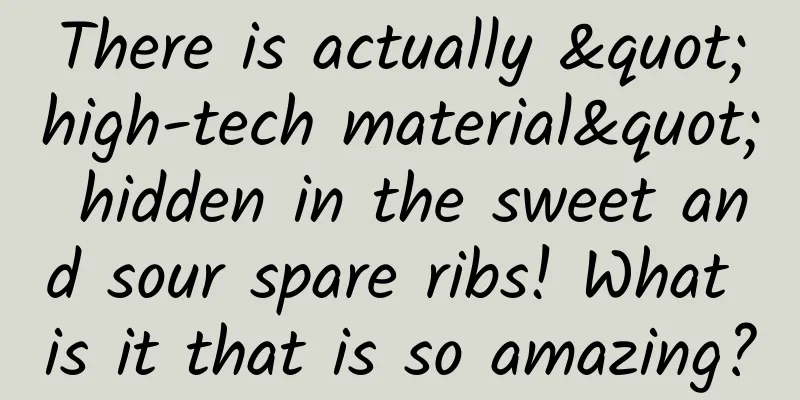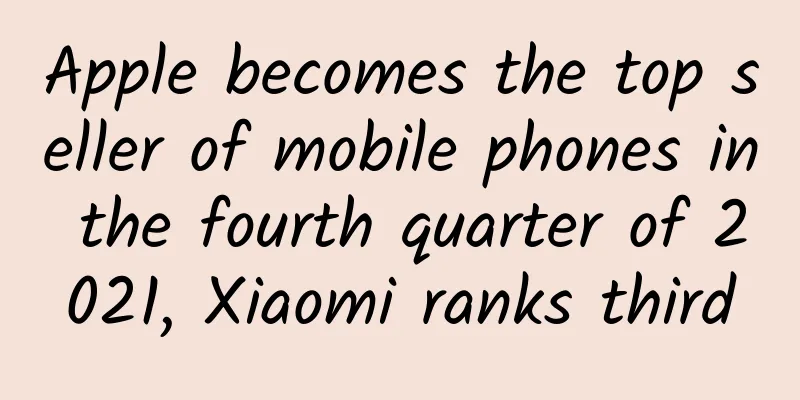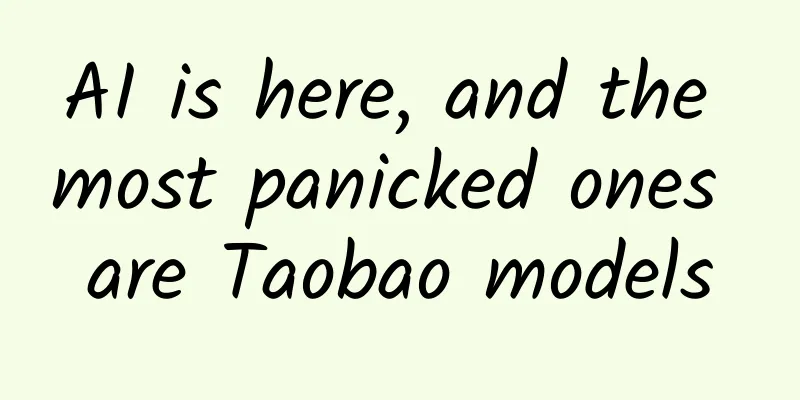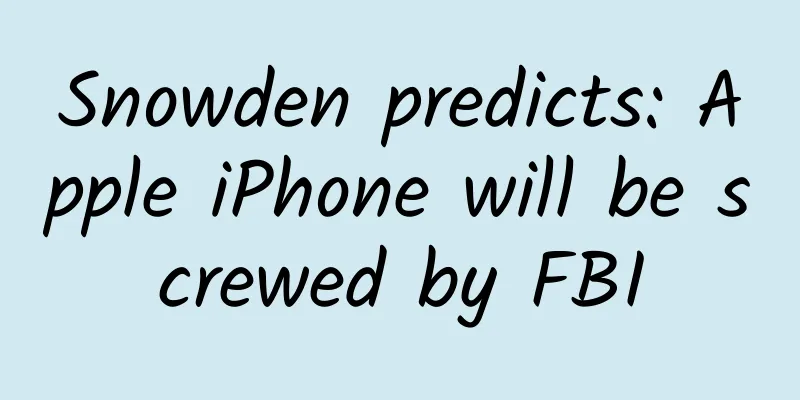There is actually "high-tech material" hidden in the sweet and sour spare ribs! What is it that is so amazing?

|
Following nanomaterials, quantum materials have become popular in recent years. Of course, it is not just materials, anything that has the word "quantum" attached to it immediately becomes more sophisticated. After all, quantum mechanics still sounds a bit intimidating. But there is a kind of quantum material that does not require huge factories, expensive instruments, or sophisticated techniques. It only needs a pot and can be made at home. It is quantum dot material. 01 What is it? When we encounter a term we have never heard of, we might as well do a set of scientific "three qualities": What is it? What is it used for? How to do it? So what are quantum dots? As the name implies, quantum dots are "dots" that can exhibit quantum properties. Of course, this "dot" is not a true zero-dimensional point, but means that the size of this material is very small. The size of quantum dots is usually a few nanometers to tens of nanometers, and such a small size is enough for quantum dots to exhibit quantum properties such as quantum tunneling and Coulomb blockade. Cadmium sulfide quantum dots on cells | Source: Reference [1] In fact, quantum dots are a group of atoms with a specific structure. The exciton quantum states they excite are bound in three directions in space (excitons: bound states formed by charges and holes under the Coulomb effect). This binding effect is very similar to the binding effect of atoms on electrons in a three-dimensional state in nature, so quantum dots are also called artificial atoms. According to the main elements that make up quantum dots, quantum dots can be divided into silicon quantum dots, germanium quantum dots, cadmium sulfide quantum dots, cadmium selenide quantum dots, cadmium telluride quantum dots, zinc selenide quantum dots, lead sulfide quantum dots, lead selenide quantum dots, indium phosphide quantum dots and indium arsenide quantum dots, etc. Different quantum dots are prepared in different ways and can also show different properties. 02 What's the use? What are quantum dots used for? This starts with the properties of quantum dots. The properties of quantum dots are between semiconductors and discrete atomic molecules. In semiconductors, electrons absorb photons, jump from the valence band to the conduction band, and leave holes in the valence band. This pair of electrons and holes will form excitons under the Coulomb effect. When the electrons and holes that make up the excitons return to the corresponding ground state, the energy of the excitons will be released in the form of photons, forming fluorescence. Schematic diagram of exciton energy levels | Source: Reference [1] As mentioned before, there are also excitons in quantum dots, and the excitons in quantum dots also release energy in the form of photons, so quantum dots usually emit fluorescence. And the photoelectric properties of quantum dots usually change with the size and shape. Large quantum dots with a diameter of 5-6 nanometers emit longer wavelength fluorescence, such as orange or red light; smaller quantum dots (2-3 nanometers) emit shorter wavelengths of light, producing colors such as blue and green light. The excellent adjustable luminescence properties of quantum dots give them broad application prospects in the field of optoelectronics. Quantum dots of different sizes emit different colors of light when excited by the same beam of light | Source: Reference [1] Potential applications of quantum dots include, but are not limited to, single-electron transistors, solar cells, light-emitting diodes, lasers, single-photon sources, quantum computing, cell biology research, microscopy, and medical imaging. Especially in the field of displays, quantum dots have unique advantages. The difference from traditional displays is that quantum dot displays use blue LED light sources. As mentioned earlier, quantum dots of different sizes can produce light of different colors. After the blue LED light passes through the corresponding quantum dots, it is converted into red light or green light respectively. Adding the blue light directly displayed by the blank pixels, there are red, green and blue RGB lights, which can then be combined to produce the various colors needed. As early as June 2006, the concept version of quantum dot displays was proposed, and in 2013, there was a real commercial quantum dot display. Maybe the one your friends have at home is a quantum dot display~ 03 How to do it? After so much preparation, we finally come to the question we talked about at the beginning: how to prepare quantum dot materials? At present, the preparation methods of quantum dot materials can be roughly divided into three types: chemical solution growth method, epitaxial growth method and electrochemical method. Different methods are suitable for different types of quantum dot growth. Let's talk about them one by one. The first is the chemical solution growth method. The editor likes to call this method the "big pot stewing method". This method is to put the raw materials in a chemical solution in a certain proportion, maintain a certain temperature and heat for a period of time, and then you can get quantum dots. It is simple, safe and efficient, and usually causes very little damage to the environment. It is a very common preparation method. Here we have to mention a quantum dot material - carbon quantum dot material. Its special feature is that the raw materials and methods for preparation are too simple. Juice, milk, egg white, vitamin C, glucose, grass leaves, etc. can all be used as raw materials for the preparation of carbon quantum dots, and the temperature requirement for the preparation process is not high. Don’t throw away the leftover sweet and sour pork ribs. Take them out and put them under ultraviolet light. If you see fluorescent dots, they are carbon quantum dots. Copyright image, no permission to reprint Epitaxial growth can be divided into molecular beam epitaxy and chemical vapor deposition. The principle is to control the reaction and deposition of raw materials on the surface of a specific substrate to obtain quantum dots. The quantum dots prepared by this method are highly controllable, especially molecular beam epitaxy, which grows in an ultra-high vacuum environment, and the purity of the product is very high; the disadvantage is that the preparation cost is relatively expensive, and the released gas may pollute the environment. In addition to quantum dots, changing the growth temperature, time and other parameters can allow the product to grow further on the substrate, thereby obtaining one-dimensional nanotube materials or two-dimensional thin film materials. The electrochemical method uses specific raw materials as electrodes and forms a circuit through a specific electrolyte. By applying a certain alternating voltage, the quantum dots can be peeled off from the raw material electrodes. This method has a high yield and little environmental damage, but its disadvantage is that the types of quantum dots that can be prepared are limited. In addition to these three methods, there are many other methods for preparing quantum dots, such as arc discharge method, laser ablation method, combustion method, plasma synthesis method, etc. Different methods have their own advantages and disadvantages, and are suitable for preparing different types of quantum dots. The properties of the same quantum dots prepared by different methods will also be different. Quantum dot materials sound so high-end, but they can actually be made by cooking. I have to eat sweet and sour pork ribs more often now. References: [1] Quantum dot - Wikipedia [2] Wang Zhenlin. New progress in surface plasmon research[J]. Progress in Physics, 2009, 29(03): 287-324. [3] Lin Zhangbi, Su Xingguang, Zhang Hao, Mou Ying, Sun Ye, Hu Hai, Yang Bai, Yan Ganglin, Luo Guimin, Jin Qinhan. Research on using quantum dots synthesized in aqueous solution as bioluminescent markers [J]. Journal of Chemistry in Universities, 2003(02):216-220. [4] Li Ting, Tang Jilong, Fang Fang, Fang Dan, Fang Xuan, Chu Xueying, Li Jinhua, Wang Fei, Wang Xiaohua, Wei Zhipeng. Synthesis, properties and applications of carbon quantum dots[J]. Functional Materials, 2015, 46(09):9012-9018+9025. Author: New Media Center of Institute of Physics, Chinese Academy of Sciences Review | Luo Huiqian, Researcher, Institute of Physics, Chinese Academy of Sciences Produced by | Science Popularization China-Starry Sky Project (Creation and Cultivation) The cover image and the images in this article are from the copyright library Reproduction of image content is not authorized |
<<: Thales: The first person in the childhood of science丨Expand the scroll
>>: How to drink water to be healthy? Don't be misled by it. Let's learn from it.
Recommend
Why are high-defense servers so expensive?
Why are high-defense servers so expensive? The In...
Fired on the third day of probation?
Recently, there was a very popular post on the V2...
Why is it more difficult for some people to get over a broken heart?
© Eric Thayer/Reuters Leviathan Press: Humans are...
The universe is not eternal. What are the possible endings? All the theories point to the same end.
The universe is not eternal, which is a very diff...
Taking a book sales website as an example, let’s talk about how to increase the paid conversion rate
Paid conversion means: getting users to consume a...
A rough and fast Android full-screen adaptation solution
1. Current situation Due to the serious fragmenta...
How to analyze data in product operations?
Today we will talk about the last element of the ...
6 ways to monetize short video traffic!
Many people say that short videos cannot generate...
Google says Android 14 will improve privacy and security
Google announced the first Android 14 developer p...
Golden Gekko, a global mobile solutions provider, predicts the top ten mobile trends in 2015
[[128848]] I got an internal forecast from Golden...
The road to "customized marketing" for online education in 2020
The battle for customer acquisition in online edu...
Looks cool iris photos, but actually hides a mystery
Produced by: Science Popularization China Author:...
Is it really useful for TV technology to move towards mobile 4K screens on mobile phones?
The Mobile World Congress MWC2017, which just conc...
Baise Moving Mini Program investment price inquiry, how much is the Baise Moving Mini Program investment price?
What is the investment cost of Baise Moving Mini ...









